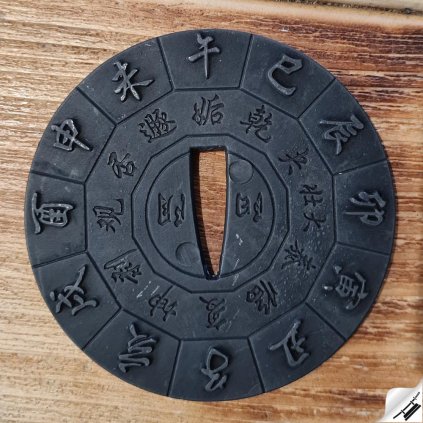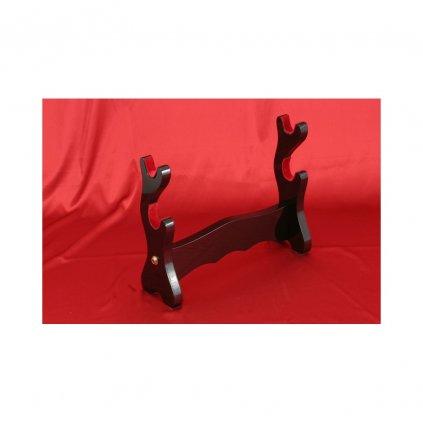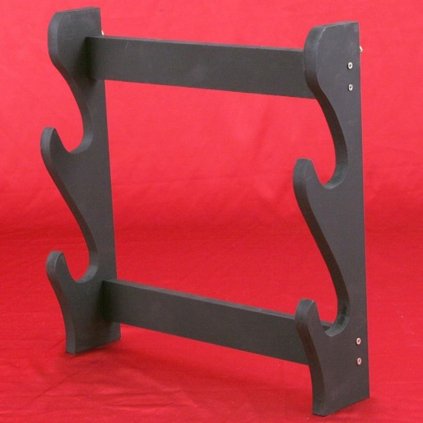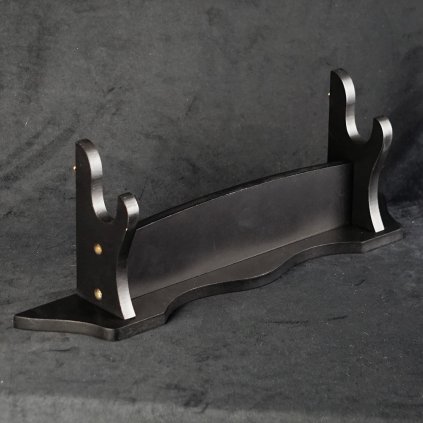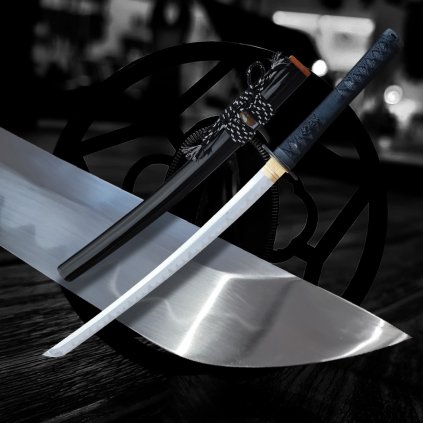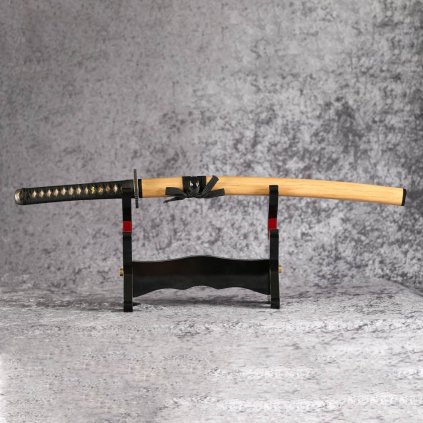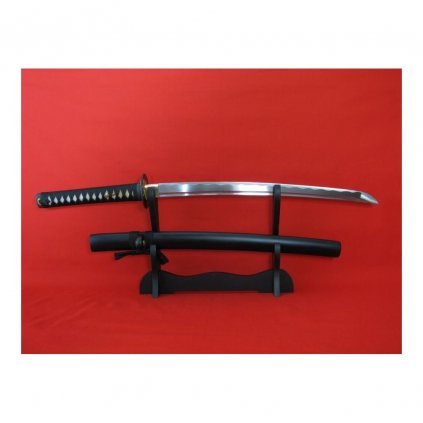Mandji Sukashi Katana - T-10 Steel, Real Suguha Hamon
Code: ST-90



Related products
Product detailed description
Mandji Sukashi Japanese Katana Sword T-10 Steel, Real Suguha Hamon
.
Hand forged blade made of T-10 steel of the highest quality. The steel has been laminated in a monocomposite Maru configuration - differentially hardened. T-10 carbon steel (1.1% carbon and 0.4% manganese content) is very strong and holds its edge very well. The bo-hi groove blade has been hand polished with hazuya stone in the final stage - this achieves an almost razor sharp edge and a mirror-like shine.
The distinctive real Suguha hamon is created according to ancient traditional methods, based on the many years of experience of the master blacksmith who spent several days making this beautiful weapon. Everything on this sword is individually made, including the saya and habaki, and the finest components are used, including top quality saya lacquer, Japanese silk and real stingray leather of the highest quality. This is a high-end replica of a samurai sword that is suitable for sake trials and can be disassembled into individual parts. This blade has been tried and tested to remove everything in its path ! The Sori (curvature of the blade) is specially designed to achieve the finest and cleanest cuts possible. All this combined with the choice of traditional Koshirae forged ensures that you get the best in terms of appearance and functionality. The T-10 carbon steel has an impressive hardness of HRC 58 - the perfect combination of this hardness is accentuated by the curvature of the Sori blade, which makes it easy to cut through tatami, straw mats, or bamboo for tameshigiri. The full tang construction of this katana greatly increases the sword's power. The blade is of the shinogi-zukuri type, this type of blade has been produced since the 10th century AD. The tip of the ko kissaki sword with a true Diamond-Shaped Yokote, which is very well defined by the hamon running the entire length through the Boshi. The Yokote is very important to the structural integrity of the sword tip. It helps absorb shock, dissipates force, and contributes to the stability and strength of the sword during the so-called follow-through. This katana (samurai sword) is suitable for practical use, the company Dellinger but the company disclaims any responsibility for injuries and damages resulting from use. Keep out of reach of children ! Any handling of the samurai sword is your own responsibility. Remember that you have a deadly weapon in your hands !
.
The blade in the blade design with a groove (hi zukuri) is ideal for training the cleanness of the cut, because thanks to the bo-hi groove the blade "whistles"(tachi kaze - "wind of the sword") during a technically well-executed stroke, so that it is possible to verify the correct execution of the technique. The calm, straight line of the suguha-style hamon tempering gives the impression of harmonious power, stemming from the early traditions of Yamashiro and Yamato-den and later inspiring swordsmiths of the following centuries.
Kuro ishime nuri saya, koliri, koiguchi and kurigata of horn, sage-o ivory colour. An iron tsuba pierced by a motif of interlocking Buddhist swastikas (manji tsunagi), a symbol of long life. The Tsuba has a brass fukurin bezel on the edge (mimi), nicely contrasting with the dark patina of the iron. The manji motif also appears on the handle fittings of the fuchi-kashira, imitating the Kaga-zogan, and the paired menuki ornaments. The tsuka maki braid is made of deerskin in the usual hineri maki style. The ideal sword for adepts of the martial art of Iaido.
.
This is a highly crafted and fully functional replica of a samurai sword.
.
.
TECHNICAL DESCRIPTION:
| Total length of the sword | 104,2 cm |
| Sword weight without sayi | 970 g |
| Sword weight including sayi | 1270 g |
| Blade length (Zukuri) | 70,7 cm (incl. Habaki 2.9 cm) |
| Type of blade | Shinogi Zukuri |
| Blade | Hi-Zukuri, chú-kissaki, nioi deki suguha, fumbari |
| Blade material | T-10 Hi-carbon steel. blade hardness (Hasaki) 58HRC |
| Blade thickness (for Habaki) | 0.7 cm |
| Blade height (for Habaki) | 3.1 cm |
| Blade thickness (Kissaki) | 0.6 cm |
| Blade height (Kissaki) | 2 cm |
| Tip length (long o Kissaki) | 3.4 cm |
| Blade curvature (Sori) | 2.3 cm |
| Hamon | real, SUGUHA type |
| Habaki | brass (length 2,9 cm) |
| Tsuba | cast, punctuated by a motif of interconnected Buddhist swastikas (manji tsunagi), a symbol of long life. The Tsuba has a brass fukurin bezel on the edge (mimi), nicely contrasting with the dark patina of the iron. |
| Tsuka (handle) | wooden core, the braid of the tsuka maki is made of deerwood in the usual hineri maki style. The blade is secured with 2 bamboo "mekugi" pins. |
| Saya (cloak) | made of hardwood - perfect handmade. The sage-o braid is ivory in colour. |
.
Dellinger guarantee: Dellinger comes with a 100% satisfaction guarantee or risk-free money back guarantee. We guarantee an excellent product that will give you the best service. Each sword or katana is packaged in a deluxe sheath and can be a wise gift solution for a birthday, wedding or Christmas.
.
samurai sword warranty - examples of misuse
In general, these are all activities except for traditional chopping test techniques, which involve chopping into special mats.
.
- Cutting branches, trees and bushes: for this activity people have developed other tools such as axes or machetes.
- Chopping, or swordplay with another sword: destructive damage to the blade of a samurai sword - samurai avoided any direct contact with the enemy to avoid damaging the blade. The repair was long and expensive.
- Never wear a sharp samurai sword with the blade exposed in public: Always keep your sword in the Saye (scabbard). In Germany and other EU countries, this is even an obligation prescribed by gun law.
- Never insert a dirty blade into Say: If you are performing chopping tests on fruit, clean and preserve the blade immediately after chopping, otherwise the blade will rust and oxidize.
- Never leave your sword in a damp place such as a porch, shed, cellar or conservatory: This is certainly not the treatment this traditional weapon deserves. Always clean the blade after use, brush with oil and store the sword in a dry place.
Additional parameters
| Category: | katana |
|---|---|
| Weight: | 0.22 kg |
| Stav: | new |



